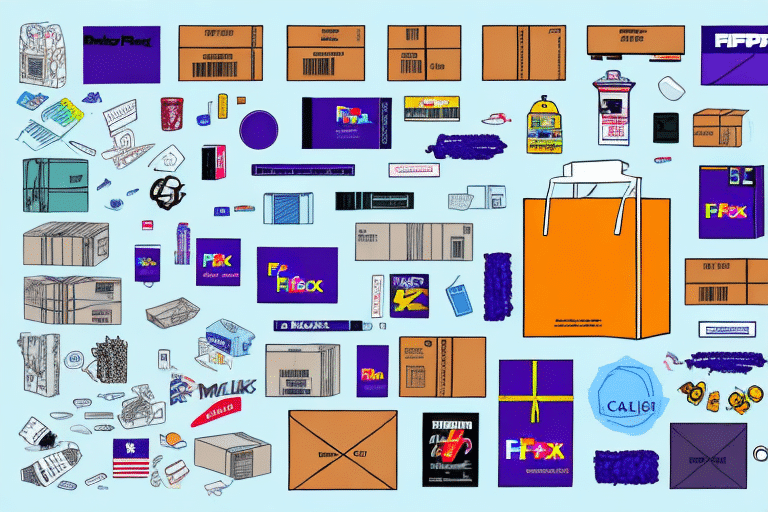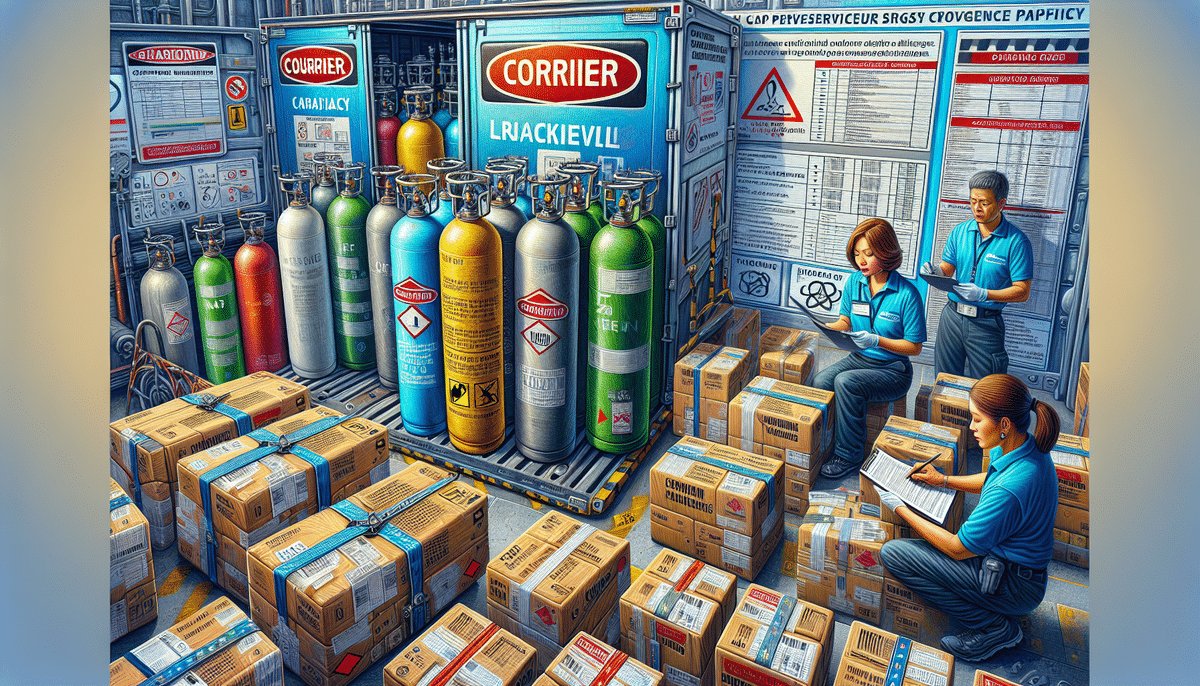Overview of FedEx's Dangerous Goods Policy
Understanding FedEx's Dangerous Goods Policy is essential for safely and legally transporting hazardous materials. This policy ensures the protection of employees, other carriers, and the general public by outlining strict guidelines for handling dangerous goods.
Definition of Dangerous Goods
According to FedEx, dangerous goods are items or substances that pose a risk to health, safety, or property during transportation. This includes:
- Flammable liquids and solids
- Explosives
- Corrosive materials
- Toxic substances
- Radioactive materials
- Batteries, firearms, and compressed gases
For a comprehensive list, refer to FedEx’s official Dangerous Goods Page.
Purpose of the Policy
The primary objectives of FedEx's Dangerous Goods Policy are:
- Ensuring the safe transport of hazardous materials
- Complying with international, national, and local regulations
- Preventing accidents and incidents during shipping
- Maintaining the integrity and reliability of FedEx's shipping services
Adhering to these guidelines helps in the safe and efficient delivery of packages containing dangerous goods.
Understanding the Dangerous Goods Fee
The Dangerous Goods Fee is an additional charge applied by FedEx for the shipment of hazardous materials. This fee covers the extra costs associated with handling and transporting dangerous goods safely.
Why Does FedEx Charge a Dangerous Goods Fee?
FedEx imposes this fee to offset the additional expenses related to:
- Specialized Packaging: Ensuring materials are securely packaged to prevent leaks or spills.
- Increased Handling: Trained personnel handle dangerous goods to maintain safety.
- Regulatory Compliance: Adhering to strict governmental and international shipping regulations.
These measures are crucial for the safe transportation of hazardous materials and to protect all parties involved in the shipping process.
Is the Dangerous Goods Fee Optional or Mandatory?
The Dangerous Goods Fee is mandatory for any shipment classified under dangerous goods. Failure to declare these items and pay the associated fee can lead to serious repercussions, including fines, shipment delays, and legal actions.
Compliance with this fee ensures that all hazardous materials are handled according to FedEx's stringent safety standards.
Identifying Dangerous Goods to Ship via FedEx
Properly identifying whether your shipment contains dangerous goods is crucial to comply with FedEx’s policies and avoid potential penalties.
What Products Are Considered Dangerous Goods by FedEx?
FedEx categorizes the following items as dangerous goods:
- Lithium batteries
- Aerosol sprays
- Gasoline and other flammable liquids
- Fireworks and other explosives
- Compressed gases like propane and oxygen tanks
For a detailed and updated list, consult FedEx’s Dangerous Goods Shipping Requirements.
Exceptions to FedEx's Dangerous Goods Policy
While FedEx maintains strict regulations, there are exceptions for certain types and quantities of dangerous goods:
- Excepted Quantities: Small amounts of hazardous materials that present minimal risk during transportation.
- Limited Quantities: Larger quantities than excepted, but still within limits that reduce the stringency of packaging and labeling requirements.
- Permissible Goods: Items allowed under specific circumstances, such as medical or scientific purposes.
Each exception has its own set of guidelines. It is essential to review FedEx’s policies or consult directly with FedEx representatives to determine eligibility.
Shipping Process for Dangerous Goods with FedEx
Shipping dangerous goods with FedEx involves several steps to ensure compliance and safety throughout the transportation process.
How Much Is the Dangerous Goods Fee and When Is It Charged?
The Dangerous Goods Fee varies based on the type and quantity of hazardous materials being shipped. To determine the exact fee:
- Complete the Dangerous Goods Shipping Form.
- Submit the form to FedEx for review.
- Receive a calculated fee based on the provided information.
The fee is charged at the time of shipment and will appear on your invoice.
How to Properly Package and Label Your Dangerous Goods for Shipping with FedEx
Proper packaging and labeling are critical to ensure the safe transport of hazardous materials:
- Packaging: Use FedEx-approved containers designed for hazardous materials to prevent leaks and spills.
- Labeling: Affix appropriate hazard warning labels that clearly indicate the type of dangerous goods being shipped.
- Documentation: Provide detailed descriptions and necessary permits or certifications as required by FedEx and regulatory bodies.
For detailed packaging and labeling requirements, refer to FedEx’s Dangerous Goods Guidelines.
Compliance and Consequences
Adhering to FedEx's Dangerous Goods Policy is not only a legal obligation but also critical for ensuring safety during the shipping process.
What Happens If You Don't Declare Your Dangerous Goods with FedEx?
Failing to declare dangerous goods can lead to significant consequences, including:
- Fines and Penalties: Regulatory bodies may impose substantial fines for non-compliance.
- Shipment Delays: Undeclared hazardous materials can cause shipments to be held or returned.
- Legal Action: Severe non-compliance can result in legal proceedings against the shipper.
- Safety Hazards: Improperly handled dangerous goods can pose risks to individuals and property.
To avoid these issues, always accurately declare any hazardous materials in your shipments.
How to Appeal a FedEx Dangerous Goods Fee
If you believe the Dangerous Goods Fee charged by FedEx is incorrect, you can appeal the decision by following these steps:
- Gather all relevant documentation, including the Material Safety Data Sheet (MSDS), shipping forms, and any correspondence with FedEx.
- Contact FedEx’s customer service or the specific department handling dangerous goods.
- Submit a detailed explanation along with your supporting documents.
- Await FedEx’s review and decision on your appeal.
It's advisable to work with a professional shipping consultant or FedEx representative to navigate the appeals process effectively.
Cost Saving and Alternatives
Shipping hazardous materials can be expensive, but there are strategies to minimize costs while ensuring compliance with FedEx’s Dangerous Goods Policy.
Tips for Saving Money on Your FedEx Shipping Costs, Including the Dangerous Goods Fee
Consider the following tips to reduce your shipping expenses:
- Consolidate Shipments: Combine multiple shipments into one to take advantage of bulk shipping rates.
- Use Professional Services: Partner with certified hazardous materials shipping experts to optimize packaging and reduce fees.
- Stay Informed: Regularly review FedEx’s discounts and promotions, which can offer significant savings.
- Alternative Packaging: Utilize compliant and cost-effective packaging solutions to lower overall shipping costs.
Comparing the Dangerous Goods Policies of Other Shipping Companies with FedEx's Policy
Before finalizing your shipping carrier, it's beneficial to compare FedEx’s Dangerous Goods Policy with those of other carriers:
- UPS: Offers similar services with its own set of regulations and fee structures.
- DHL: Provides international shipping options with distinct dangerous goods guidelines.
- USPS: Limited in the types of hazardous materials it can transport compared to FedEx and UPS.
Each carrier has unique policies, fees, and handling procedures for dangerous goods. Assessing these differences can help you choose the most cost-effective and compliant shipping solution for your needs. Visit the respective carrier’s official websites for detailed information:
By thoroughly comparing these options, you can ensure that you select a shipping provider that best fits your budget and compliance requirements.
Additional Resources
For more information on shipping dangerous goods, consider consulting the following reputable sources:
- Federal Aviation Administration (FAA) Dangerous Goods Regulations
- Pipeline and Hazardous Materials Safety Administration (PHMSA)
- International Civil Aviation Organization (ICAO) Dangerous Goods
Staying informed through these authoritative sources will help you maintain compliance and ensure the safe transportation of hazardous materials.






















